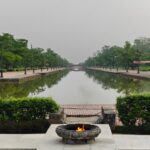The recent increase in COVID-19 vaccinations across the world has been accompanied by a tide of vaccine nationalism. This was perhaps expected as not only has nationalism been on rising in the international political sphere but also, history has taught us that a nationalist response is a common knee-jerk reaction to global pandemics.
Perhaps a more visible proponent of vaccine nationalism has been in the approach taken by China. It issued a notice through its embassies that travelers could get easy access to a Chinese visa if they use the Sinovac and Sinopharm vaccine. Another example is where it has asked Paraguay to break ties with Taiwan, with a promise of access to vaccines. Then there are wealthier countries like the UK, France, Germany and the US that have entered into a pre-purchase agreement with COVID-19 vaccine manufacturers even before the end of the final stage human trials. High income level countries with only 14% of the world’s population have bought 53% of the global supply of 8 most promising vaccines. For example Canada has enough vaccines to vaccinate the entire population five times and the UK more than five doses per person. It has been estimated that 90% of the population in 67 low income countries stand a very little chance to have the vaccination by the end of this year.
However, vaccine nationalism is not a phenomenon as it was first seen when the world crippled with H1N1 flu pandemic in 2008/09. Wealthier countries entered into pre-purchase agreements with several pharmaceutical companies and Australia, which was the first country to develop the vaccine blocked its exports. H1N1 was a milder disease with much lesser symptoms as compared to COVID-19 which has now killed 2.9 million people worldwide.
Nepal received 1 million Covishield vaccines in the first grant from the Government of India in mid -January this year. By the end of March, Nepal ran out of the India-made vaccine. With many eagerly awaiting the second dose, it seems the second dosage will take time to arrive, leading Nepal to rely on a donation of the 800,000 doses of the Vero Cell Chinese vaccine. Nepal has become the first country in South Asia Pacific to start the immunizing its refugees. Moreover, Nepal has about 400,000 frontline health workers. With such a huge number in its priority list already, the national campaign for vaccination against COVID-19 will not be successful only through grants or donations. Covishield vaccines have a huge global demand. India manufactures 60% of the vaccines globally. With many countries already in the waiting list, Nepal should look for adequate alternatives to vaccinate its people.
China has been supplying its vaccines to Pakistan, Sri Lanka, Bangladesh, Uzbekistan, and Laos etc. since last December. India has been supplying to Bhutan, Bangladesh, Myanmar, Seychelles, the Maldives etc. through its Vaccine Maitri initiative. Both the countries have been exporting their vaccines to gain strong footholds in the emerging neighboring countries and there is no doubt that the two Asian giants have been trying to proclaim soft power through its medical supplies. The alternative to vaccine nationalism is the COVID-19 Vaccines Global Access (COVAX) program, the U.S. and the G7 nations have committed to vaccinating at least 20% of the populations of low- and middle-income countries by the end of 2021 but with the current vaccination rate of 6.7 million doses per day, it will take 4.6 years to build herd immunity. In January 2021, WHO issued a campaign #VaccineEquity which aims to overcome the pandemic and the inequalities that lie at the root of many global health challenges but at the current vaccine supply/distribution rate, the infrastructure, the tendency of powerful economies to hoard the vaccines and with no provisions in the international law that prevents pre-purchase agreements and such hoardings, successful roll out the vaccination drive might take years.
Sampada has a Masters in Commerce with a specialization in International Business from Mount Carmel College, India. She has over two years of experience working for the private sector in India and Nepal, particularly within the manufacturing and retail sector. Sampada is currently working as a Growth Analyst at Daraz.





